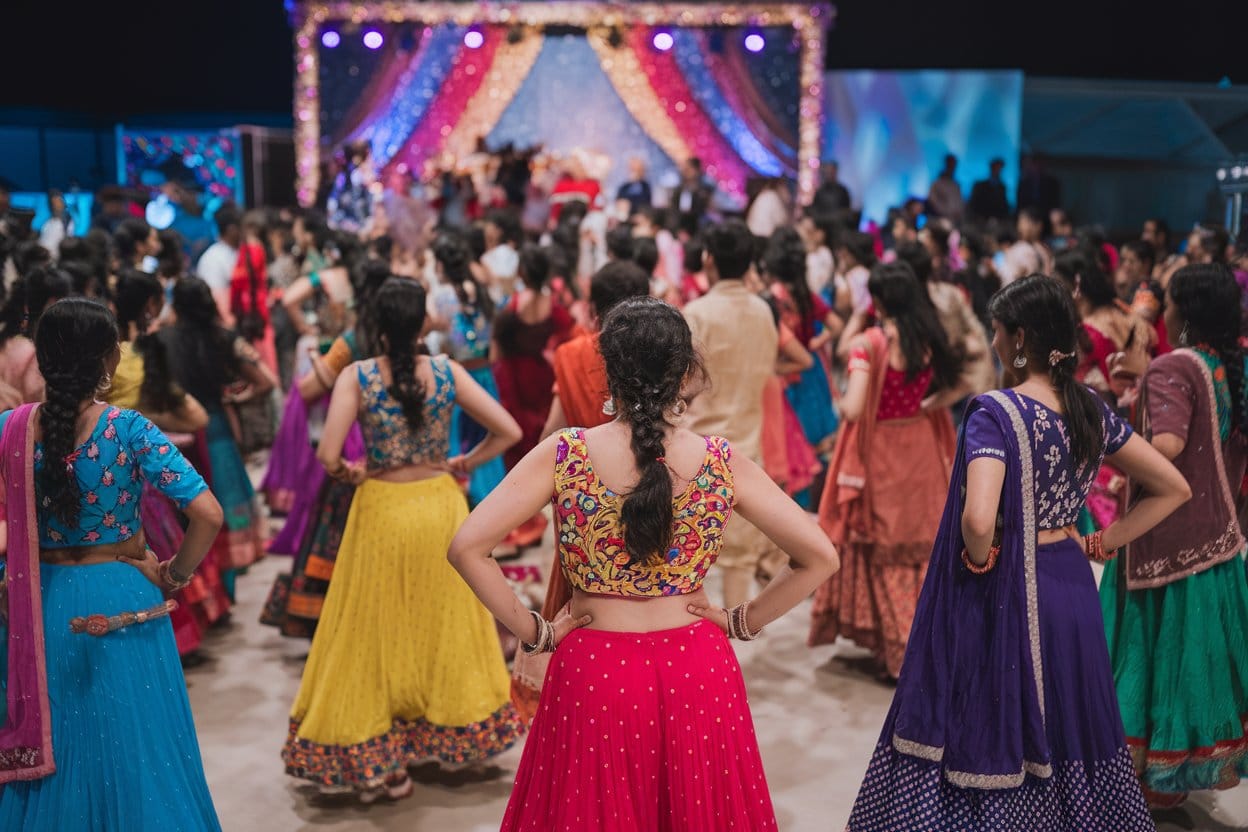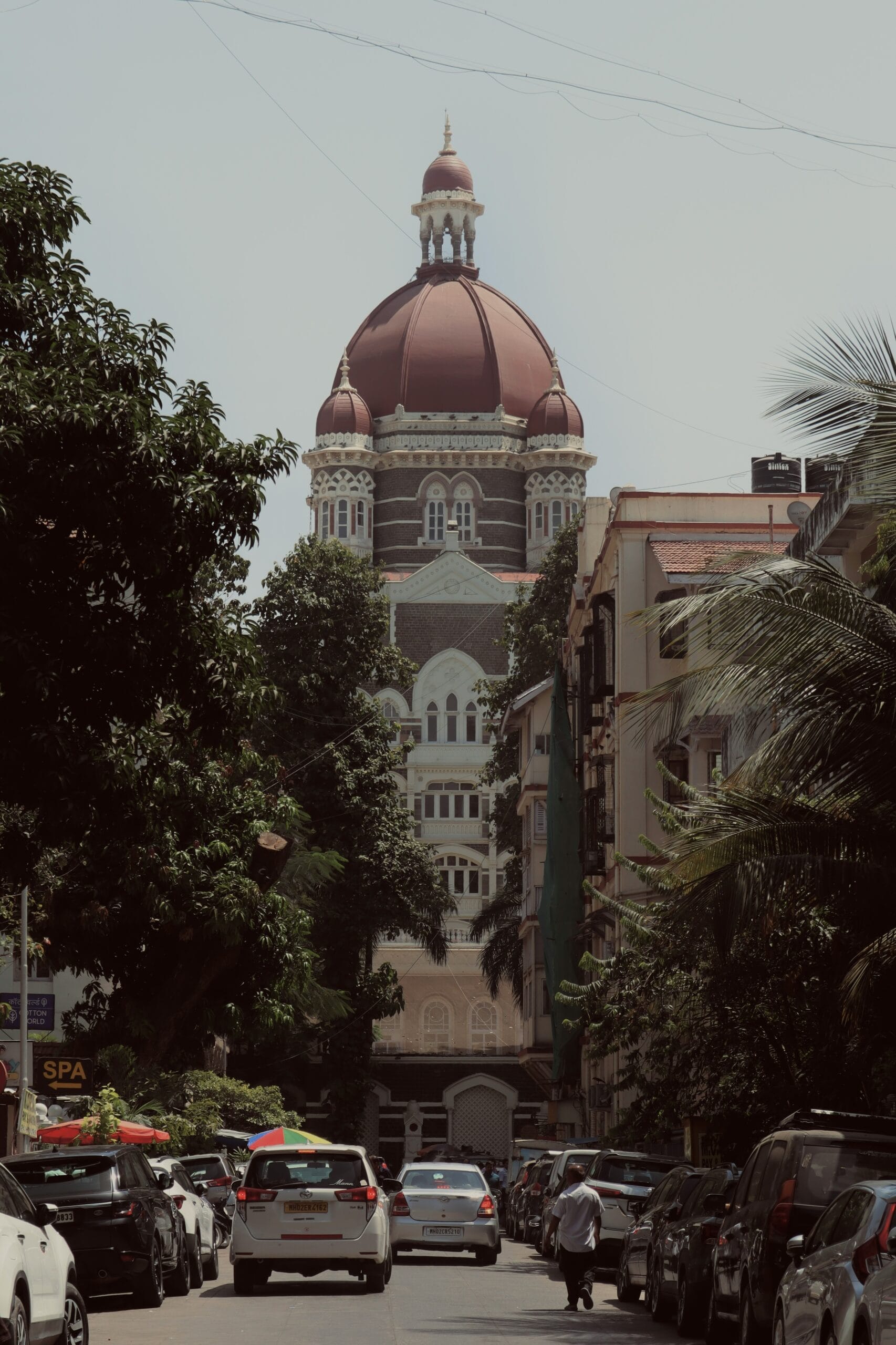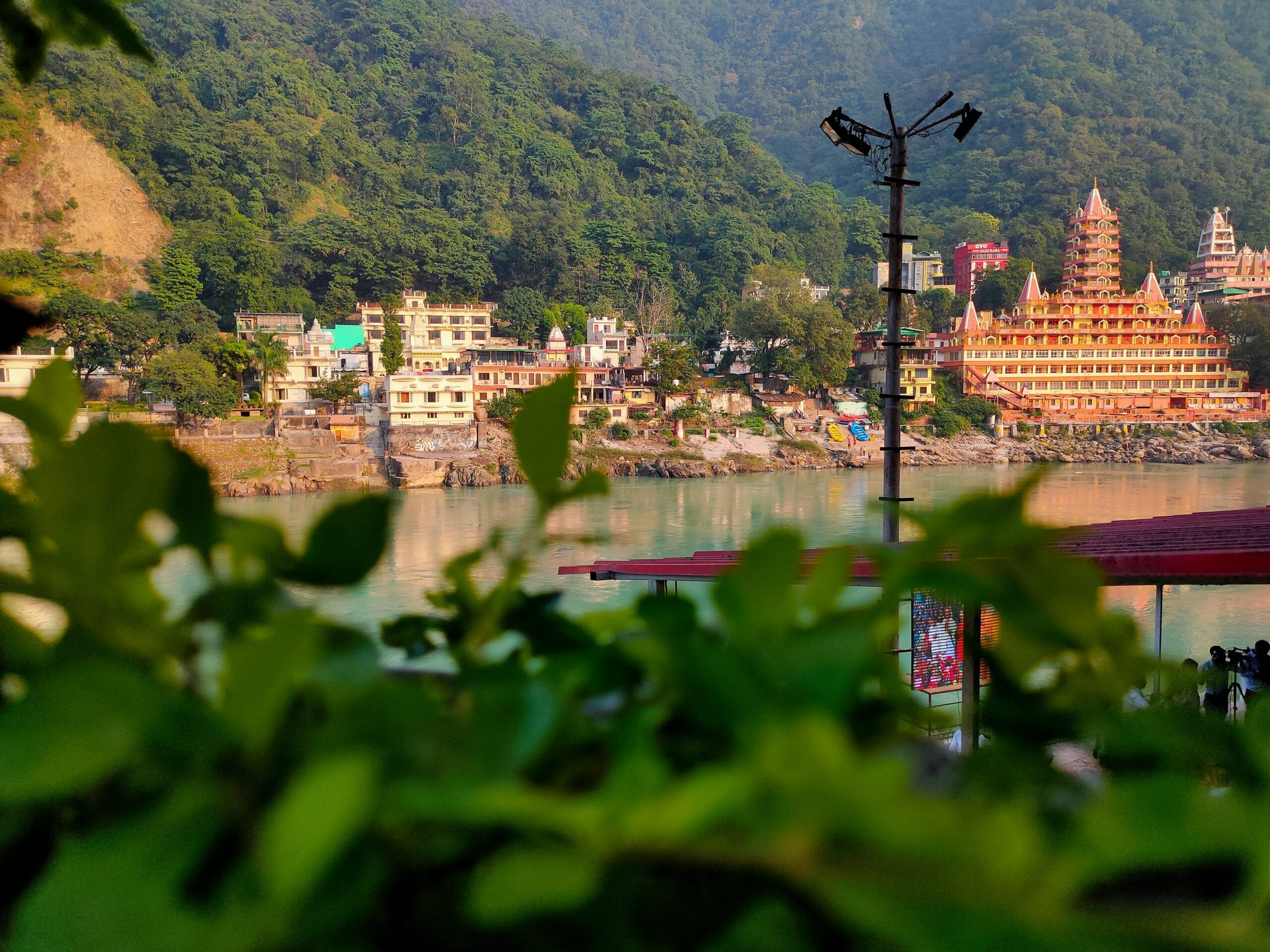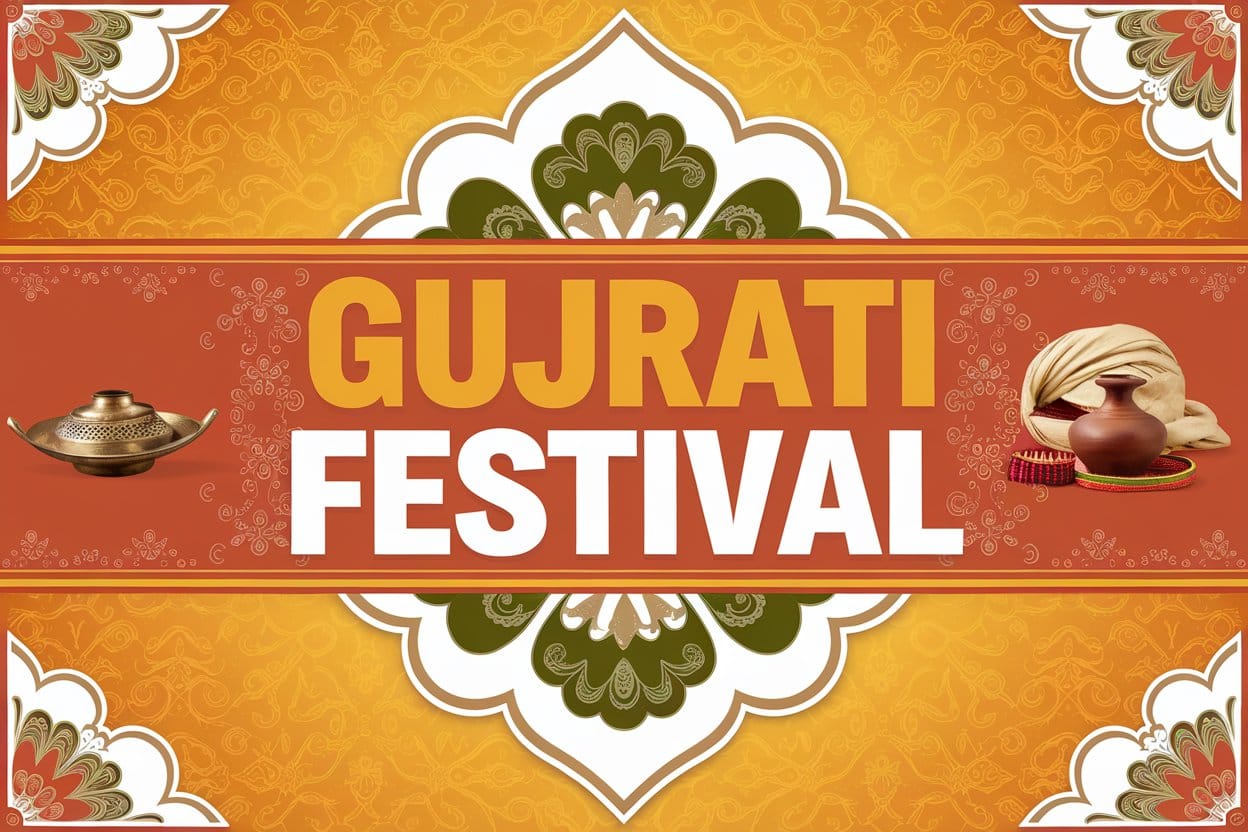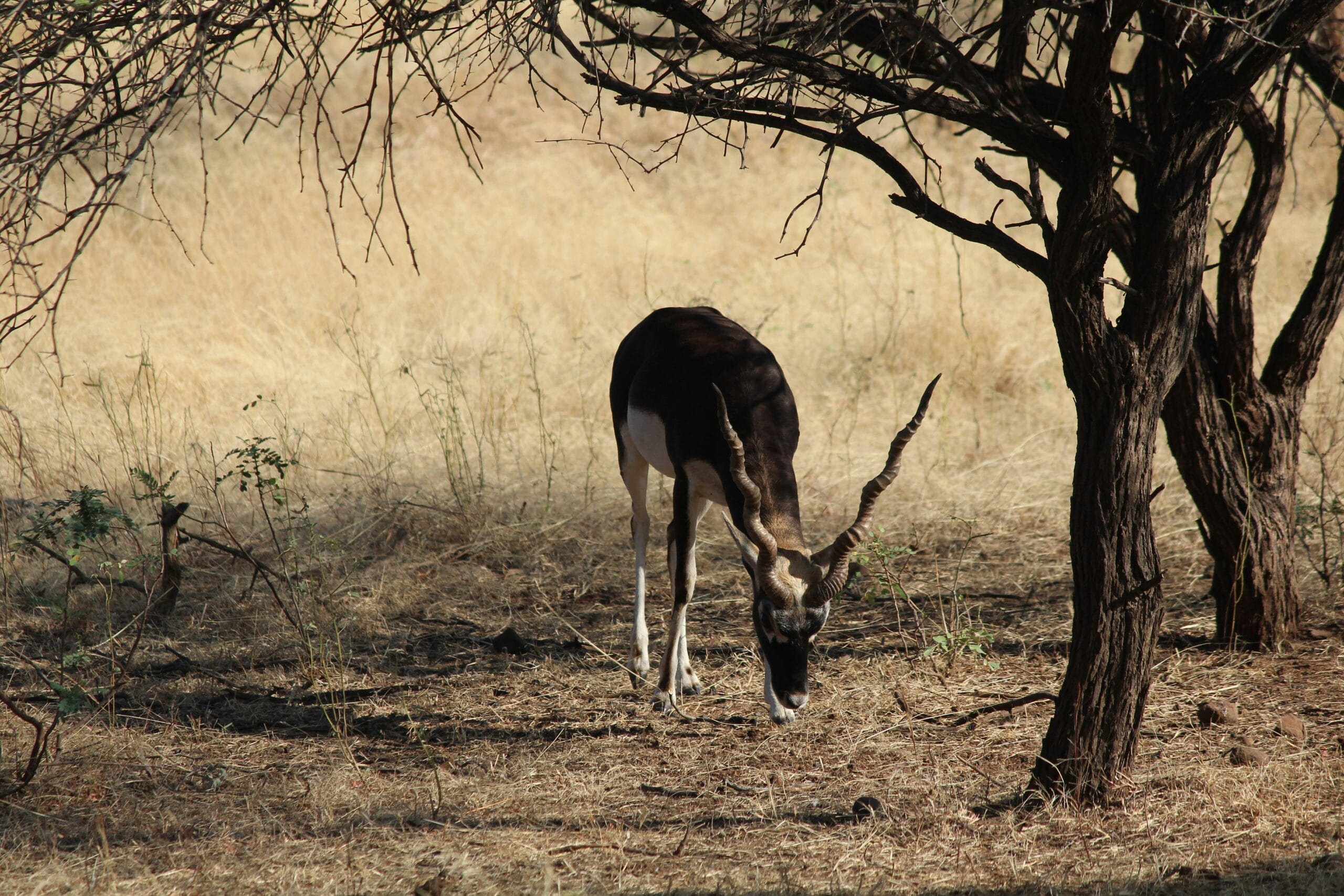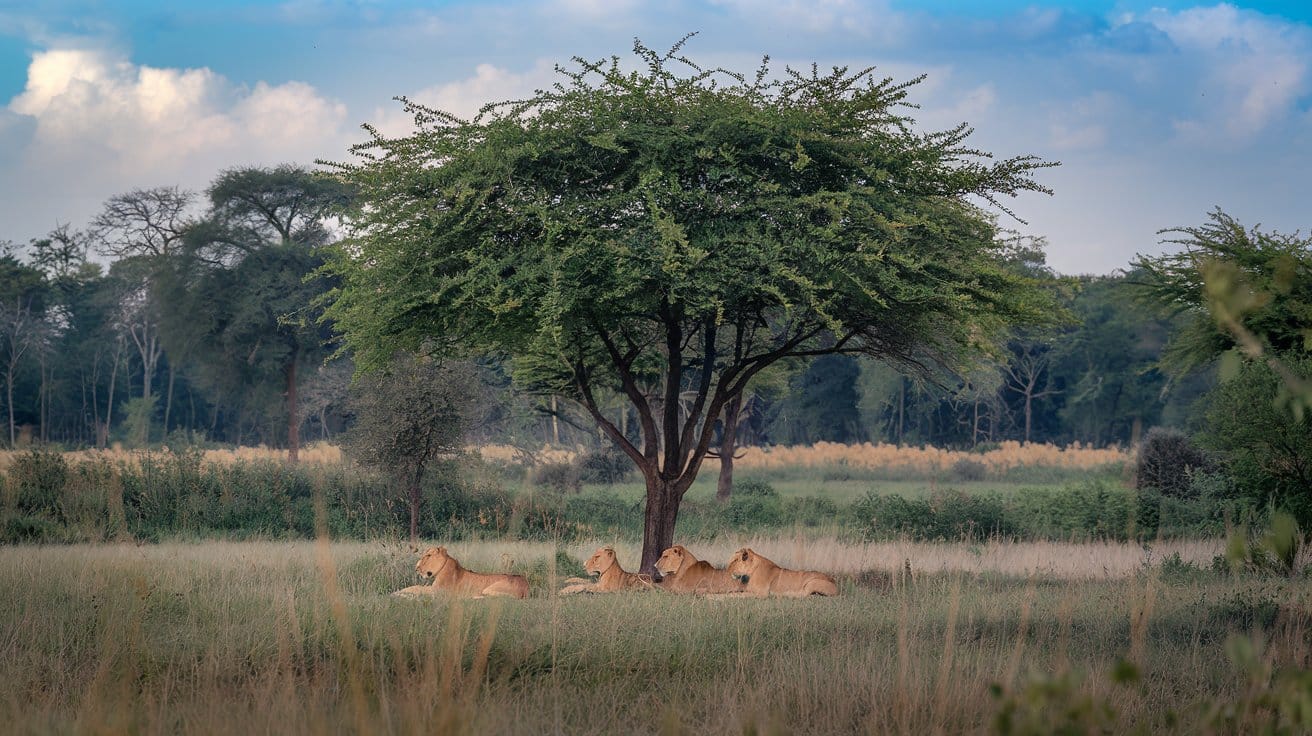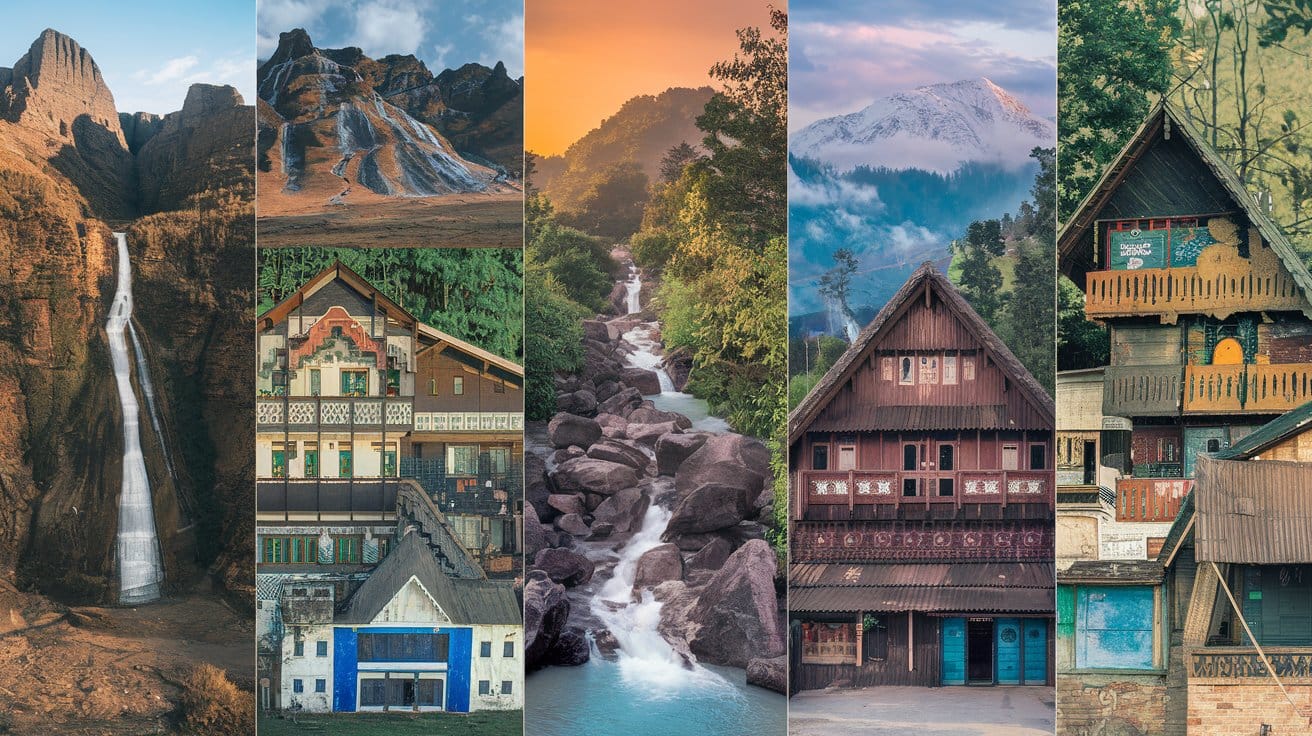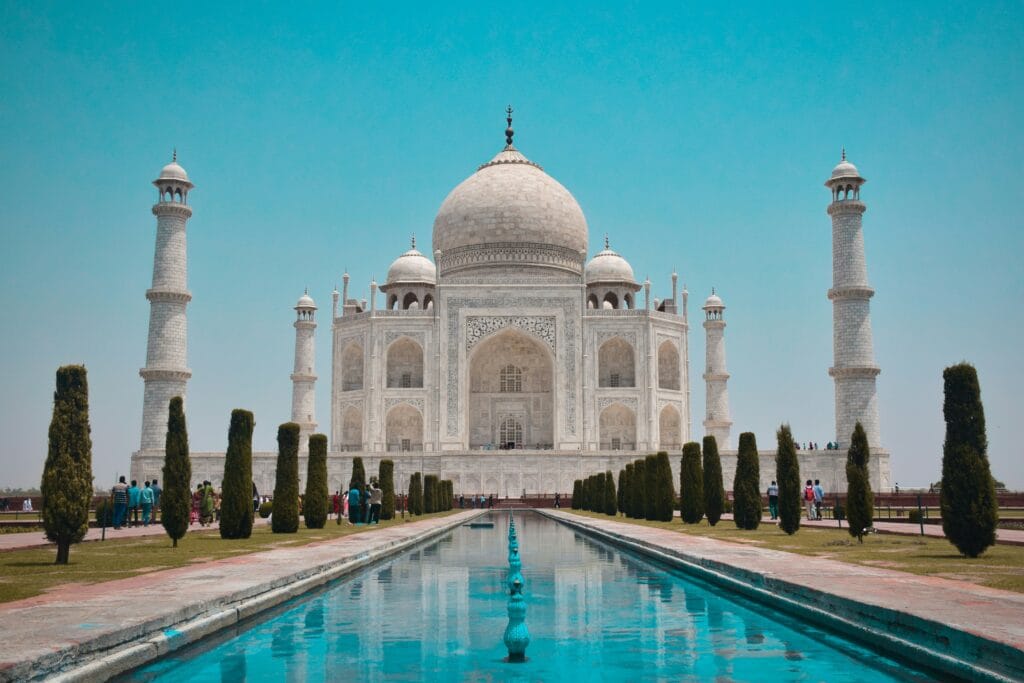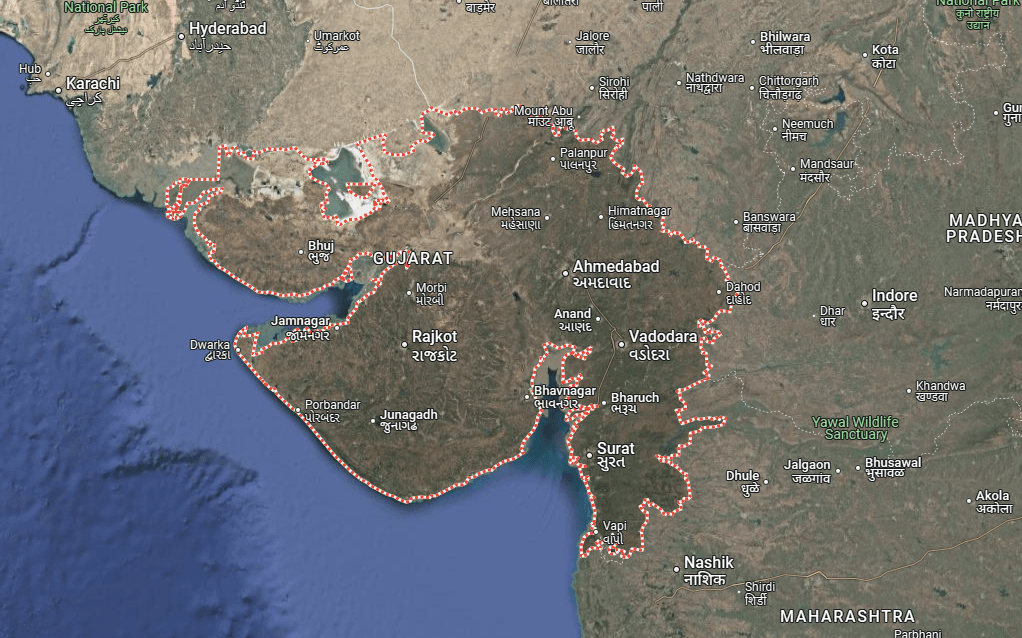
Welcome to Gujarat
A State of Vibrancy and Tradition
Gujarat, a state located on the western coast of India, is a vibrant tapestry of rich culture, stunning landscapes, and fascinating history. As one of India’s most diverse regions, Gujarat blends modernity with age-old traditions, offering travelers a unique and unforgettable experience. From the colorful festivals that light up the streets to the serene landscapes of its beaches and salt deserts, Gujarat is a state that pulses with energy and pride.
The cultural richness of Gujarat is visible in its everyday life—whether it’s the mesmerizing dance of Garba during Navratri or the intricate patterns of Bandhani textiles woven by skilled artisans, every corner of Gujarat speaks of deep-rooted traditions. The state’s festivals, particularly Makar Sankranti, Diwali, and Rath Yatra, bring people together in joyous celebrations that reflect Gujarat’s communal harmony and zest for life.
But Gujarat’s vibrancy isn’t confined to its festivals and culture alone. The state’s people, known for their warmth and hospitality, have long been a hallmark of the region. Gujaratis are known for their entrepreneurial spirit, and the state’s cities, like Ahmedabad and Surat, have grown into bustling economic hubs. Despite this modernity, Gujarat has managed to preserve its age-old customs, making it a place where the past and present coexist harmoniously.
As you step into Gujarat, you are not just visiting a state; you are stepping into a world that tells stories of ancient temples, historic forts, and the ongoing cultural evolution. From the iconic Statue of Unity—the world’s tallest statue, dedicated to Sardar Vallabhbhai Patel—to the ancient temples of Somnath and Dwarka, the architectural beauty of Gujarat is as diverse as its people.
What truly sets Gujarat apart is its ability to honor its traditions while embracing innovation and growth. Whether you’re exploring the world-famous Rann Utsav in Kutch or indulging in Gujarat’s famous Gujarati Thali, you’ll find that the state never fails to surprise and delight. Gujarat invites you to experience not only its vibrant culture but also its deep-seated respect for its past, creating an enriching journey that leaves a lasting impression.
Why Gujarat Should Be on Your Travel List
Gujarat, a state brimming with diverse landscapes, vibrant culture, and rich history, should undoubtedly be on every traveler’s list. While many think of India’s bustling cities and famous tourist spots, Gujarat offers something refreshingly different—an escape into a land where tradition and modernity coexist in perfect harmony.
First and foremost, Gujarat is known for its striking natural beauty. From the vast, white salt desert of the Rann of Kutch to the lush greenery of Gir National Park, Gujarat’s landscapes are incredibly diverse. If you’ve always dreamt of witnessing the grandeur of a desert or the majestic sight of Asiatic lions in the wild, then Gujarat is the place to be. The Rann Utsav, held annually in Kutch, is one of India’s most unique festivals, offering visitors a magical experience amidst the salt marshes under the moonlight.
Secondly, the state is a treasure trove of cultural heritage. Whether it’s the energetic dance of Garba during Navratri, the delicate art of Bandhani fabric-making, or the colorful handicrafts of Kutch, Gujarat has a rich tradition that draws visitors in. The region’s diverse communities, each with its own customs, crafts, and culinary delights, make Gujarat a feast for the senses. Its festivals are some of the most exciting and lively celebrations in India, reflecting the warmth and passion of the people who call this place home.
For history enthusiasts, Gujarat holds a key place in India’s past. The state is home to some of the country’s most significant landmarks, including the stunning Sun Temple at Modhera, the ancient ruins of Lothal, and the iconic Statue of Unity, which is the tallest statue in the world, dedicated to India’s first Deputy Prime Minister, Sardar Vallabhbhai Patel. Whether you’re visiting the temples of Dwarka or the historic Somnath Temple, Gujarat offers a glimpse into India’s deep historical and spiritual roots.
Food lovers will find themselves in paradise as well. Gujarat is renowned for its diverse cuisine, which offers a delightful mix of sweet, spicy, and savory flavors. From the famous Gujarati Thali, a satisfying array of dishes, to street food like Dhokla, Khandvi, and Farsan, there’s no shortage of culinary delights to explore. The local cuisine perfectly mirrors the state’s culture—rich, varied, and always full of flavor.
Additionally, Gujarat offers travelers a wonderful balance of urban and rural experiences. In cities like Ahmedabad, you can enjoy modern amenities while exploring traditional markets, cultural centers, and UNESCO World Heritage sites like the Pols of Ahmedabad. In contrast, a visit to the quieter regions of Kutch or Saurashtra will immerse you in the tranquil beauty of rural India, where life moves at a slower pace, and ancient traditions still hold strong.
The state’s infrastructure has rapidly improved over the years, with excellent road networks, transport options, and welcoming accommodations. This makes traveling around Gujarat easy and convenient, whether you’re visiting for a short trip or an extended stay.
From natural beauty to cultural richness, Gujarat offers something for everyone. The state’s warmth, hospitality, and zest for life are palpable in every corner, and whether you’re a history buff, adventure seeker, or simply in search of a relaxing getaway, you’ll find what you’re looking for in Gujarat. If you haven’t yet added Gujarat to your travel list, now is the perfect time to explore this incredible and unique destination.
Exploring the Rich Cultural Heritage of Gujarat
Gujarat is a treasure trove of cultural heritage, offering a perfect blend of ancient traditions, vibrant festivals, and timeless artistry. The state’s cultural richness is deeply rooted in its history, shaped by various dynasties, communities, and traditions that have flourished here over centuries. Let’s take a closer look at what makes Gujarat’s cultural heritage so unique and captivating.
Folk Music and Dance
Gujarat’s folk music and dance forms are a vibrant reflection of its traditions. The energetic Garba and Dandiya Raas are world-famous and often performed during Navratri, a festival celebrated with unparalleled enthusiasm across Gujarat. The hauntingly beautiful folk songs, sung in Gujarati, narrate tales of love, devotion, and heroism, keeping the state’s oral traditions alive.
Handicrafts and Artistry
Gujarat is renowned for its exquisite handicrafts, which showcase the skill and creativity of its artisans. From the intricate bandhani (tie-dye) textiles and colorful patola sarees to the detailed zari embroidery and beadwork, Gujarat’s craftsmanship is admired worldwide. The Kutchi embroidery and mirror work are particularly popular, reflecting the unique artistry of the Kutch region.
Historical Monuments and Architecture
The architectural heritage of Gujarat is a testimony to its glorious past. The Sun Temple at Modhera, the intricately carved stepwells like Rani ki Vav in Patan (a UNESCO World Heritage Site), and the magnificent Jama Masjid in Ahmedabad are just a few examples of Gujarat’s architectural marvels. Each monument tells a story of the state’s historical and cultural evolution.
Festivals of Gujarat
Festivals in Gujarat are grand, colorful, and deeply rooted in tradition. The Kite Festival (Uttarayan) transforms the skies of Gujarat into a canvas of colors, while Navratri celebrates devotion and dance. Other significant festivals like Rath Yatra in Ahmedabad and the vibrant Rann Utsav in Kutch showcase the diversity and grandeur of Gujarat’s cultural celebrations.
Cuisine of Gujarat
Gujarat’s culture is incomplete without its food. The state’s cuisine is a delightful mix of flavors, with a focus on vegetarian dishes. From the iconic Gujarati thali, featuring dishes like dhokla, khandvi, and undhiyu, to the sweet flavors of shrikhand and basundi, every meal in Gujarat is a celebration of taste and tradition.
Cultural Diversity
Gujarat is home to various communities, including Hindus, Muslims, Jains, and Parsis, each contributing to the state’s rich cultural tapestry. The tribal communities of Gujarat, such as the Bhils and Rabaris, add another layer of diversity with their unique customs, rituals, and art forms.
Preserving Gujarat’s Heritage
The people of Gujarat take immense pride in their cultural heritage and actively work to preserve it. Museums like the Calico Museum of Textiles in Ahmedabad and cultural festivals like Shreyas Folk Museum are dedicated to showcasing and protecting the state’s traditions.
Gujarat is a land of joy and vibrant celebrations, where festivals are not just events but a way of life. Known for its enthusiasm, grandeur, and rich traditions, Gujarat’s festivals bring communities together in a kaleidoscope of colors, music, dance, and spirituality. Here’s a glimpse into the most famous festivals of Gujarat, each a true reflection of the state’s culture and heritage.
1. Navratri: The Festival of Dance and Devotion
Navratri is Gujarat’s most iconic festival, celebrated with unmatched fervor. For nine nights, the state comes alive with rhythmic Garba and Dandiya Raas performances. Dressed in traditional chaniya cholis and kediyas, people dance in circles around a beautifully decorated earthen lamp (garbo), symbolizing the victory of good over evil. Navratri is a spiritual and cultural experience unique to Gujarat, attracting visitors from across the world.
2. Uttarayan: The International Kite Festival
Every January, Gujarat’s skies burst into a riot of colors during Uttarayan, the Kite Festival. Celebrated to mark the transition of the sun into Capricorn, this festival sees people of all ages flying kites from rooftops and open grounds. Ahmedabad hosts an International Kite Festival, where participants from different countries showcase their creativity with intricately designed kites. Uttarayan is more than just a festival; it’s a day of unity and joy.
3. Rann Utsav: A Cultural Extravaganza
Held in the vast white desert of the Rann of Kutch, the Rann Utsav is Gujarat’s most spectacular cultural festival. From November to February, this festival celebrates Gujarat’s folk traditions, handicrafts, and natural beauty. Visitors can enjoy camel rides, folk dances, music performances, and even luxury tent stays under the star-studded sky. The breathtaking moonlit landscape of the white desert during the festival is a sight to behold.
4. Rath Yatra: A Grand Religious Procession
Rath Yatra, held in Ahmedabad, is one of Gujarat’s most significant religious festivals. Celebrated in honor of Lord Jagannath, this festival involves a grand procession where beautifully adorned chariots carrying the deities are pulled by thousands of devotees through the city streets. The atmosphere is charged with devotion, music, and chants, making it a spiritually uplifting experience.
5. Modhera Dance Festival: Celebrating Gujarat’s Artistic Heritage
Held at the historic Modhera Sun Temple, the Modhera Dance Festival is a visual and cultural delight. Classical dancers from across the country perform against the backdrop of this architectural marvel, celebrating Gujarat’s connection to art and spirituality. This festival is a tribute to Gujarat’s ancient traditions and its enduring love for the performing arts.
6. Janmashtami: Honoring Lord Krishna’s Birth
Dwarka, the city of Lord Krishna, is the focal point of Janmashtami celebrations in Gujarat. Temples are beautifully decorated, and devotional songs fill the air. The highlight of the festival is the reenactment of Krishna’s life through dance and drama, known as Raas Leela. Devotees flock to Dwarkadhish Temple to seek blessings and immerse themselves in the spiritual energy of Gujarat.
7. Shamlaji Fair: A Tribal Celebration
The Shamlaji Fair, held at the Shamlaji Temple, is a unique festival celebrated by Gujarat’s tribal communities. Pilgrims travel from far and wide, often singing folk songs along the way, to pay homage to Lord Vishnu. The fair is also a marketplace for traditional goods and handicrafts, offering a glimpse into the tribal culture of Gujarat.
8. Tarnetar Fair: A Vibrant Marriage Festival
The Tarnetar Fair, held in the village of Tarnetar, is a one-of-a-kind celebration in Gujarat. Known as a marriage fair, it is a platform for tribal communities to find their life partners. The fair is adorned with colorful decorations, folk dances, and competitions, making it a lively event that reflects Gujarat’s rural charm and traditions.
9. Vautha Fair: Gujarat’s Ancient Cattle Fair
The Vautha Fair is a unique festival dedicated to livestock, held at the confluence of seven rivers. This ancient fair is a bustling marketplace where farmers trade cattle while enjoying cultural performances and food stalls. The festival highlights Gujarat’s agrarian roots and its deep connection to nature.
10. Diwali: The Festival of Lights
Diwali, celebrated with grandeur across Gujarat, is a festival of lights and prosperity. Homes are decorated with diyas, rangolis, and fairy lights, while families gather to perform Lakshmi puja. Gujarat’s unique way of celebrating Diwali includes feasting on special sweets like mohanthal and ghughra, making it a time of joy and togetherness.
Top 10 Must-Visit Destinations in Gujarat
1. Statue of Unity
The Statue of Unity, the tallest statue in the world, stands proudly in Kevadia, Gujarat. Dedicated to Sardar Vallabhbhai Patel, this architectural marvel symbolizes unity and strength. The surrounding area includes attractions like the Valley of Flowers, Jungle Safari, and the Sardar Sarovar Dam. It’s a must-visit spot for anyone exploring Gujarat.
2. Gir National Park
Gujarat is home to the majestic Asiatic lions, and Gir National Park is the only place in the world where you can see them in their natural habitat. A jeep safari through the dense forests of Gir offers an unforgettable experience, with chances to spot leopards, deer, and a variety of bird species.
3. Rann of Kutch
The White Desert of Gujarat, the Rann of Kutch, transforms into a magical landscape during the Rann Utsav. This salt desert stretches endlessly and is best visited during the full moon when the white sands shimmer under the moonlight. Cultural performances, traditional handicrafts, and camel rides add to the charm.
4. Somnath Temple
Somnath Temple is one of the 12 Jyotirlingas of Lord Shiva and a symbol of Gujarat’s rich spiritual heritage. Situated on the shores of the Arabian Sea, the temple is an architectural masterpiece with a history that dates back centuries. Witnessing the evening aarti here is a soul-stirring experience.
5. Dwarkadhish Temple
Dwarka, one of the Char Dhams, is a sacred city in Gujarat, known for the Dwarkadhish Temple dedicated to Lord Krishna. The temple’s intricate carvings and serene atmosphere attract devotees and history enthusiasts alike. Don’t miss the mesmerizing sunset at Dwarka Beach nearby.
6. Ahmedabad's Sabarmati Ashram
Sabarmati Ashram in Ahmedabad offers a glimpse into the life of Mahatma Gandhi and his role in India’s independence movement. The ashram is a serene spot by the Sabarmati River and features a museum with photographs, writings, and artifacts associated with Gandhi’s life.
7. Champaner-Pavagadh Archaeological Park
A UNESCO World Heritage Site, Champaner-Pavagadh Archaeological Park is a treasure trove of history and culture. The site boasts stunning forts, palaces, mosques, and temples that date back to the 8th century. The Kalika Mata Temple at the top of Pavagadh Hill is a major pilgrimage site.
8. Mandvi Beach
For a relaxing seaside escape, Mandvi Beach in Gujarat offers golden sands, tranquil waters, and picturesque sunsets. Located in the Kutch district, it’s an ideal spot for beach lovers. The nearby Vijay Vilas Palace, a stunning royal residence, adds a touch of grandeur to your visit.
9. Modhera Sun Temple
The Modhera Sun Temple is a brilliant example of Solanki architecture and is dedicated to the Sun God. Located in the Mehsana district, the temple is adorned with intricate carvings and sculptures. The annual Modhera Dance Festival showcases Gujarat’s vibrant cultural heritage.
10. Bhuj
Bhuj, the gateway to the Rann of Kutch, is steeped in history and culture. Visit the Prag Mahal, Aina Mahal, and Bhujia Fort to explore the city’s royal past. Bhuj is also known for its vibrant handicrafts, including bandhani textiles and embroidered garments, making it a haven for shopaholics.
The Natural Wonders of Gujarat: From Rann of Kutch to Gir National Park
Gujarat’s natural beauty is as diverse as its cultural heritage. From vast salt deserts to lush forests teeming with wildlife, the state offers a unique mix of landscapes that attract nature enthusiasts from around the world. Let’s explore the natural wonders that make Gujarat a haven for nature lovers.
1. The Rann of Kutch: A White Desert Wonder
The Rann of Kutch is one of Gujarat’s most iconic natural wonders. This vast salt desert stretches endlessly, offering a surreal white landscape that looks especially magical under the full moon. The Rann is not only a visual delight but also a hub of cultural activity during the Rann Utsav, where visitors can experience camel rides, traditional music, and local crafts.
2. Gir National Park: The Home of Asiatic Lions
Gir National Park is a jewel in Gujarat’s natural crown, being the only place in the world where Asiatic lions can be found in their natural habitat. This wildlife sanctuary is home to a rich diversity of flora and fauna, including leopards, deer, and over 300 bird species. A safari through Gir’s dense forests offers an unforgettable experience of Gujarat’s wildlife.
3. Saputara: Gujarat’s Hill Station
Nestled in the Sahyadri Hills, Saputara is Gujarat’s only hill station and a popular escape from the state’s otherwise arid landscapes. With its lush greenery, serene lakes, and charming viewpoints, Saputara is perfect for trekking, boating, and enjoying the cool mountain air.
4. Marine National Park: A Unique Underwater World
Located in the Gulf of Kutch, the Marine National Park is India’s first marine sanctuary. This protected area is home to fascinating coral reefs, mangroves, and marine life, including dolphins and sea turtles. Visitors can explore the park’s unique underwater ecosystem through guided boat tours and snorkeling activities.
5. Little Rann of Kutch: A Habitat for Wild Asses
The Little Rann of Kutch is a stark yet beautiful landscape that serves as the habitat for the endangered Indian Wild Ass. This saline desert is also a birdwatcher’s paradise, with flocks of flamingos, pelicans, and other migratory birds making it their seasonal home. Jeep safaris here provide a thrilling adventure for wildlife enthusiasts.
6. Nalsarovar Bird Sanctuary: A Birder’s Paradise
Spread over a massive wetland area, Nalsarovar Bird Sanctuary is a haven for migratory birds. During winter, thousands of birds, including cranes, storks, and flamingos, flock to this sanctuary. Boating through the tranquil waters of Nalsarovar offers an unparalleled birdwatching experience.
7. Wilson Hills: A Lesser-Known Gem
Wilson Hills, located near Dharampur, is a serene and lesser-known hill station in Gujarat. Surrounded by dense forests and offering stunning views of the Arabian Sea, it is an ideal spot for nature lovers seeking solitude and scenic beauty.
8. Polo Forest: A Green Retreat
The Polo Forest near Vijaynagar is a lush expanse of greenery dotted with ancient temples and ruins. This dense forest is a favorite spot for trekking and camping, providing a perfect mix of nature and history.
9. Blackbuck National Park: Preserving Elegance
Located in Velavadar, the Blackbuck National Park is known for its population of graceful blackbucks. The park’s grasslands also support a variety of bird species, making it a must-visit destination for wildlife and photography enthusiasts.
10. Mandvi Beach: A Tranquil Coastal Escape
Mandvi Beach, with its golden sands and clear waters, is one of Gujarat’s most beautiful coastal destinations. Visitors can relax by the shore, enjoy camel rides, and explore the nearby Vijay Vilas Palace, which offers stunning views of the Arabian Sea.
Gujarat's Historical Landmarks: A Journey Through Time
Gujarat, often referred to as the “Jewel of Western India,” is a state that brims with history, culture, and architectural brilliance. Home to some of the most iconic historical landmarks, Gujarat is a treasure trove for travelers and history enthusiasts. Let us take a closer look at the historical landmarks that define Gujarat’s glorious past.
The Ancient City of Lothal: Indus Valley Civilization
Lothal is one of the most remarkable sites of the Indus Valley Civilization, showcasing Gujarat’s connection to one of the world’s oldest urban cultures. Known for its advanced drainage systems and dockyard, Lothal was a thriving trade center. Visiting Lothal gives a glimpse into Gujarat’s ancient maritime legacy and its role as a significant hub in the trade routes of the past.
Sabarmati Ashram: A Testament to India’s Freedom Struggle
Located on the banks of the Sabarmati River in Ahmedabad, the Sabarmati Ashram is one of Gujarat’s most revered landmarks. This ashram served as Mahatma Gandhi’s residence and the center for India’s non-violent freedom movement. Visitors can explore the Hriday Kunj (Gandhi’s cottage), a museum, and various galleries that depict Gujarat’s crucial role in India’s independence.
Rani ki Vav: The Queen’s Stepwell
A UNESCO World Heritage Site, Rani ki Vav is an architectural marvel in Patan. Built in the 11th century by Queen Udayamati, this intricately designed stepwell is a masterpiece of Maru-Gurjara architecture. The seven levels of this stepwell are adorned with sculptures and carvings that reflect Gujarat’s artistic excellence and devotion to water conservation in ancient times.
Modhera Sun Temple: A Tribute to the Sun God
The Modhera Sun Temple, dedicated to Surya, the Sun God, stands as a symbol of Gujarat’s architectural grandeur. Built during the Solanki dynasty, the temple is renowned for its detailed carvings and the kund (stepped tank) in front of it. The temple’s alignment with the equinox makes it a marvel of ancient astronomy and craftsmanship.
Champaner-Pavagadh Archaeological Park: A Fusion of Cultures
This UNESCO World Heritage Site near Vadodara is a blend of Hindu and Islamic architectural styles. The site comprises palaces, mosques, temples, and stepwells that narrate the story of Gujarat’s rich and diverse heritage. The Kalika Mata Temple on Pavagadh Hill is a significant pilgrimage site and adds to the historical importance of this region.
Dwarkadhish Temple: The Abode of Lord Krishna
Dwarka, one of the four Char Dham pilgrimage sites, is home to the magnificent Dwarkadhish Temple. Believed to have been built over 2,000 years ago, this temple is dedicated to Lord Krishna. Its stunning architecture and spiritual significance make it one of Gujarat’s most visited landmarks.
Sidi Saiyyed Mosque: The Stone Lacework Marvel
Located in Ahmedabad, the Sidi Saiyyed Mosque is famous for its intricate jali (lattice) work, particularly the “Tree of Life” motif carved on its windows. Built during the reign of the Gujarat Sultanate, this mosque is a testament to the state’s artistic and cultural zenith during the medieval period.
Junagadh’s Uparkot Fort: A Stronghold of History
Uparkot Fort in Junagadh is an ancient fortress with a history that spans over 2,300 years. It has witnessed the rise and fall of various dynasties, including the Mauryas, Chudasamas, and Mughals. The fort’s attractions include stepwells, caves, and stunning views of Gujarat’s landscapes.
Somnath Temple: The Eternal Shrine
The Somnath Temple, located near the Arabian Sea, is one of the most sacred Jyotirlingas in India. Known for its resilience and architectural splendor, the temple has been rebuilt multiple times after invasions and natural calamities. Somnath stands as a symbol of Gujarat’s indomitable spirit and deep-rooted faith.
Dholavira: A Glimpse into the Harappan Era
Dholavira, another significant Indus Valley Civilization site, lies in the arid Rann of Kutch. Known for its water conservation systems and urban planning, this site reveals Gujarat’s ancient engineering prowess. Dholavira’s excavation has provided invaluable insights into the Harappan culture and its way of life.
Conclusion
Gujarat’s historical landmarks are more than just architectural wonders; they are storytellers of a glorious past. From ancient civilizations and freedom movements to intricate temples and stepwells, these sites reflect the state’s cultural diversity, resilience, and timeless appeal. Exploring these landmarks not only enriches one’s knowledge of Gujarat but also showcases the vibrant tapestry of India’s heritage.
Savoring Gujarat: A Guide to the State’s Unique Cuisine
Gujarat is a land of vibrant culture, timeless traditions, and, most notably, a culinary treasure trove that reflects its rich heritage. The state’s unique cuisine is a harmonious blend of flavors, where sweet, salty, and spicy elements coexist in perfect balance. From savory snacks to delectable sweets, Gujarati food is a celebration of taste and diversity. Let’s delve into some of the iconic dishes and culinary experiences that define Gujarat.
The Staple Thali Experience
Gujarati farsan refers to the savory snacks that are a staple in every household and a must-try for visitors. Dhokla, khandvi, and fafda are some of the most popular farsan items. These snacks are not only light and flavorful but also versatile, often served as breakfast, tea-time treats, or appetizers. The soft, spongy texture of khaman dhokla and the delicate rolls of khandvi are perfect examples of Gujarat’s culinary finesse.
Sweet Indulgences
Gujarat’s love for sweets is unparalleled, and the state offers a plethora of options to satisfy your sweet tooth. From the syrup-soaked jalebi to the rich and creamy basundi, each dessert tells a story of tradition and love for food. Mohanthal, a gram flour-based sweet, and sukhdi, a wholesome jaggery and wheat flour delight, are some other iconic Gujarati desserts worth savoring.
Street Food Galore
The bustling streets of Gujarat’s cities like Ahmedabad and Surat are a paradise for street food lovers. Try the famous Gujarati dabeli, a spicy-sweet potato filling sandwiched between buttered buns, or indulge in khichu, a steaming rice flour dish seasoned with spices. The vibrant flavors of pani puri and sev puri are sure to leave you craving more. Street food in Gujarat is an essential part of its culinary identity and a true reflection of its lively spirit.
The Importance of Pickles and Chutneys
Pickles and chutneys hold a special place in Gujarati cuisine. Whether it’s the tangy raw mango pickle or the sweet and spicy chundo, these condiments elevate any meal. Chutneys made from coriander, mint, or tamarind are served alongside snacks and meals, adding a burst of flavor to every bite.
Seasonal Specialties
Gujarati cuisine is deeply influenced by the seasons, with dishes that change according to the availability of ingredients. During winters, dishes like undhiyu, a mixed vegetable curry slow-cooked with spices, and gajar halwa, a sweet carrot dessert, take center stage. Summers bring the refreshing flavors of aam ras (mango pulp) and buttermilk, perfect for combating the heat.
Conclusion
Gujarat’s unique cuisine is a reflection of its rich culture and history. Each dish, whether it’s a humble snack or an elaborate Thali, tells a story of tradition, innovation, and love for food. Exploring the culinary delights of Gujarat is not just a gastronomic journey but also a way to connect with the heart of the state. So, the next time you visit Gujarat, don’t miss the chance to savor its extraordinary flavors that promise to linger in your memory forever.
The Vibrant Art and Craft Scene of Gujarat
Gujarat is a treasure trove of art and craft, reflecting the rich cultural heritage and traditional skills of its people. From intricate textiles to exquisite handicrafts, the state is celebrated for its creativity and craftsmanship, which have been passed down through generations.
Handwoven Textiles: A Legacy of Elegance
Gujarat is renowned for its handwoven textiles, including Bandhani, Patola, and Ajrakh. Bandhani, a tie-dye technique, creates vibrant patterns that are a hallmark of Gujarati attire. Patola sarees, originating from Patan, are known for their intricate designs and double-ikat weaving technique, symbolizing luxury and tradition. Ajrakh printing, with its geometric motifs and natural dyes, showcases the eco-friendly practices of Gujarat’s artisans.
Exquisite Embroidery: Tradition in Every Stitch
The embroidery styles of Gujarat, such as Kutch and Kathiawadi, are globally admired for their vibrant colors and intricate designs. These embroideries often incorporate mirrors, beads, and threads to create stunning patterns that adorn garments, accessories, and home décor items. Each stitch tells a story, reflecting the cultural diversity of Gujarat.
Terracotta and Pottery: Earthen Artistry
Gujarat’s terracotta art and pottery are deeply rooted in its rural traditions. The artisans create beautifully crafted pots, figurines, and decorative items using locally sourced clay. The clay work from Kutch and terracotta toys from villages like Poshina are cherished for their simplicity and artistic appeal.
The Splendor of Jewelry Making
Jewelry from Gujarat, especially silver and gold ornaments, is a testament to the state’s craftsmanship. Traditional designs like the Jadau and Kundan styles are highly sought after for weddings and festive occasions. The tribal communities of Gujarat also contribute to the jewelry scene with unique designs that showcase their heritage and way of life.
Wooden and Stone Carving: A Testament to Skill
The wood and stone carvings of Gujarat are another highlight of its craft heritage. From intricately carved furniture to temple architecture, the craftsmanship is both functional and decorative. The Sun Temple at Modhera and the Jain temples in Palitana are stunning examples of Gujarat’s architectural excellence.
Promoting Gujarat’s Art and Craft
The government and private organizations actively promote Gujarat’s art and craft through fairs, exhibitions, and e-commerce platforms. Events like the Rann Utsav and the annual Handicrafts Fair provide a platform for artisans to showcase their talent and reach a wider audience.
In essence, the vibrant art and craft scene of Gujarat is a celebration of creativity, tradition, and cultural diversity. It not only preserves the state’s heritage but also contributes significantly to its economy, making Gujarat a hub of artistic excellence in India.
Gujarat's Architecture: From Temples to Modern Marvels
Gujarat, a state rich in history, culture, and tradition, is not only known for its vibrant festivals and delicious cuisine but also for its breathtaking architecture. From intricate temples built centuries ago to modern architectural wonders, the state’s architectural landscape is a perfect blend of the old and the new.
Temples of Gujarat: Spiritual and Artistic Masterpieces
When it comes to religious and historical architecture, Gujarat is home to some of the most beautiful temples in India. These temples are more than just places of worship; they are stunning works of art that reflect the region’s rich cultural heritage.
One of the most famous temples in Gujarat is the Somnath Temple, which is a revered pilgrimage site. Located along the Arabian Sea, the temple’s striking architecture and scenic surroundings make it a must-visit. The Sun Temple at Modhera, dedicated to the Hindu sun god Surya, is another example of Gujarat’s exquisite temple architecture. Its detailed carvings and design elements showcase the state’s traditional craftsmanship.
The Akshardham Temple in Gandhinagar, with its intricately carved sandstone walls and grand structure, stands as a modern tribute to the ancient architectural styles that flourished in Gujarat. These temples not only reflect the state’s spiritual importance but also highlight the artistic legacy passed down through generations.
Modern Marvels: Contemporary Gujarat
While Gujarat has a deep-rooted connection to ancient architecture, it has also embraced modernity. The state is home to several architectural marvels that showcase contemporary designs and engineering feats.
The Sardar Vallabhbhai Patel Statue, also known as the Statue of Unity, is the world’s tallest statue and a symbol of modern Gujarat. Standing at a towering height of 182 meters, it is a remarkable feat of engineering and artistry, drawing visitors from around the globe. Its design is a modern reflection of Gujarat’s strength and unity.
Another example of modern architecture in Gujarat is the Sabarmati Riverfront Development in Ahmedabad. The project, which transformed the riverbank into a vibrant public space, is a blend of urban design, sustainability, and community-oriented spaces. It beautifully contrasts with the city’s historical structures, demonstrating how modern architecture can harmonize with its surroundings.
The Swaminarayan Akshardham Temple in Gandhinagar, a stunning blend of traditional Hindu and modern construction techniques, represents how Gujarat’s architecture bridges the gap between past and present.
Conclusion
Gujarat’s architecture is a testament to the state’s diverse cultural, spiritual, and innovative legacy. From the intricate carvings of ancient temples to the futuristic designs of modern structures, the architecture of Gujarat offers a fascinating journey through time. Whether you’re a history enthusiast, a lover of art, or someone who appreciates cutting-edge design, Gujarat’s architectural gems are sure to leave you in awe.
Adventure Awaits: Activities and Experiences in Gujarat
Gujarat is not only a land of rich history and culture but also a playground for adventure lovers. Whether you’re looking for thrilling experiences in nature, heart-pounding water sports, or exploring wildlife in its natural habitat, Gujarat has something to offer every adventure enthusiast. From the serene beauty of its beaches to the rugged terrain of its deserts, Gujarat promises an adventure-filled experience for all kinds of travelers.
Explore the Rann of Kutch: A Desert Adventure Like No Other
One of the most unique adventures in Gujarat is a visit to the Rann of Kutch. This vast salt desert is a surreal landscape that stretches to the horizon, offering travelers the chance to experience one of the most fascinating terrains in India. The Rann Utsav, held annually in the winter months, is a cultural festival that includes folk dances, music, and craft exhibitions. But it’s also an adventure lover’s dream, with opportunities for camel rides, ATV rides, and a chance to camp under the starry sky in one of the most remote and beautiful places in the world.
The Rann’s expansive white sands provide the perfect setting for adventure photography, kite flying, and exploring the unique flora and fauna of the region. Whether you’re navigating the desert on foot or by jeep, the Rann of Kutch offers an unforgettable adventure.
Water Sports and Beach Activities in Gujarat
Gujarat is blessed with a long coastline that is dotted with pristine beaches, making it an ideal destination for water sports. Diu, one of Gujarat’s most popular coastal destinations, offers opportunities for water sports like parasailing, jet skiing, and banana boat rides. The calm waters and scenic beaches provide the perfect setting for both beginners and experienced water sports enthusiasts.
In addition to Diu, other coastal regions like Mandvi Beach and Somnath Beach also offer activities such as windsurfing, kite surfing, and speed boating. Whether you’re looking to relax by the beach or seek out some thrilling adventures in the water, Gujarat’s beaches are a great place to make lasting memories.
Wildlife Safaris in Gujarat’s National Parks
For those who seek wildlife adventures, Gujarat has some of the best national parks and wildlife sanctuaries in India. The Gir National Park, home to the endangered Asiatic lion, offers exciting jeep safaris where you can spot these majestic creatures in their natural habitat. The thrill of encountering a lion up close is a once-in-a-lifetime experience for any wildlife lover.
Besides Gir, Gujarat is home to other notable wildlife sanctuaries like the Velavadar Blackbuck National Park and the Marine National Park in the Gulf of Kutch. Whether you’re birdwatching or on a safari, Gujarat’s wildlife sanctuaries promise exciting, nature-filled adventures.
Trekking and Nature Trails
For those who prefer a more grounded adventure, Gujarat has several trekking routes that explore the state’s diverse landscapes. The Saputara Hills in the Western Ghats offer gentle treks through lush forests, with opportunities to see waterfalls, wildlife, and panoramic views. The hills are also great for boating, paragliding, and enjoying scenic views from various vantage points.
The Satpura Range and the hills surrounding the Aravallis also provide excellent trekking opportunities. As you hike, you’ll pass through rich forests, ancient temples, and picturesque valleys, all of which showcase the natural beauty of Gujarat.
Cycling through Gujarat’s Scenic Routes
Gujarat is a great place for cycling enthusiasts who enjoy exploring on two wheels. The state offers several scenic cycling routes, including those through the Kutch region, the Aravallis, and along the coastline. Cycling through the vibrant villages of Gujarat, with their distinct culture and colorful surroundings, allows you to experience the state’s diverse landscapes up close.
Conclusion
From adrenaline-pumping desert adventures in the Rann of Kutch to exploring Gujarat’s natural beauty through cycling and wildlife safaris, the state offers an array of activities for every type of adventurer. Whether you’re a thrill-seeker or simply someone who enjoys exploring the outdoors, Gujarat will surely provide an unforgettable adventure. So, pack your bags and get ready for an exciting journey through Gujarat—where adventure awaits at every turn.
Sustainable Tourism in Gujarat: How to Explore Responsibly
As the world embraces the importance of responsible travel, Gujarat has emerged as a state that beautifully balances tourism with sustainability. Known for its rich cultural heritage, diverse landscapes, and thriving wildlife, Gujarat offers a plethora of experiences that can be enjoyed while ensuring minimal environmental impact. Sustainable tourism is not only about preserving the state’s natural beauty but also about respecting its traditions, supporting local communities, and making eco-conscious decisions throughout your travel.
Eco-Friendly Accommodation: Stay Green in Gujarat
When visiting Gujarat, one of the first steps to responsible travel is choosing eco-friendly accommodations. Many hotels, resorts, and homestays in the state are committed to sustainability through energy conservation, water management, and waste reduction initiatives. For example, in eco-conscious regions like Gir or Kutch, you’ll find accommodations that promote the use of renewable energy sources, local materials for construction, and organic farming practices.
By opting for these green accommodations, travelers can minimize their carbon footprint while supporting businesses that actively contribute to preserving the environment. Look for hotels with certifications like the Green Key or EarthCheck to ensure you’re staying at a place that aligns with sustainable practices.
Supporting Local Communities and Crafts
Sustainable tourism in Gujarat also extends to supporting the local communities and preserving the state’s centuries-old crafts. By purchasing locally made products, such as traditional textiles, pottery, and handicrafts, travelers contribute to the livelihoods of artisans and communities. Areas like Kutch are known for their vibrant handwoven fabrics, embroidery, and pottery, which make for perfect souvenirs that help keep ancient skills alive.
Additionally, many rural areas in Gujarat offer unique experiences where tourists can stay with local families, learn about their culture, and directly contribute to their economy. This form of immersive travel allows visitors to understand the lifestyle and traditions of Gujarat, while also ensuring that the benefits of tourism are distributed fairly.
Respecting Gujarat’s Wildlife and Natural Habitats
Gujarat is home to some of India’s most renowned national parks and wildlife sanctuaries, including the Gir National Park, the Blackbuck National Park, and the Marine National Park. These areas are vital for the conservation of wildlife, including the endangered Asiatic lion. However, it’s essential for tourists to respect the delicate ecosystems and not disturb the animals or their habitats.
Responsible wildlife tourism means adhering to park rules, staying on designated paths during safaris, and keeping a safe distance from animals. Avoiding plastic waste, refraining from feeding animals, and not disturbing the natural surroundings all contribute to preserving Gujarat’s biodiversity for future generations to enjoy.
Opting for Sustainable Transportation
Exploring Gujarat in an eco-friendly manner involves mindful transportation choices. Rather than opting for private taxis or personal vehicles, consider using public transport, carpooling, or renting electric vehicles where available. Cities like Ahmedabad have made strides toward offering electric buses, making it easier for travelers to reduce their carbon footprint.
For longer journeys, traveling by train is another sustainable option, as trains are one of the most energy-efficient modes of transportation. By choosing greener transportation methods, you not only cut down on pollution but also contribute to the state’s sustainability efforts.
Engaging in Responsible Tourism Activities
While Gujarat offers countless exciting activities, it’s important to choose experiences that align with the principles of responsible tourism. For instance, you can visit the Rann of Kutch for a cultural experience that also supports local artisans and communities during the Rann Utsav. Participating in eco-tours and bird-watching activities in regions like the Narmada River or the Little Rann of Kutch allows you to enjoy nature without harming it.
By choosing activities that prioritize environmental conservation and community involvement, you ensure that your travel contributes positively to the region. Additionally, make sure to follow the “Leave No Trace” principle—whether you’re trekking in the hills, visiting a wildlife sanctuary, or enjoying the beaches of Diu—always take your trash with you and respect the environment.
Conclusion: A Responsible Traveler’s Guide to Gujarat
Gujarat, with its diverse landscapes, vibrant culture, and rich wildlife, offers a unique opportunity to experience the beauty of India responsibly. By choosing sustainable practices in accommodation, transportation, activities, and interactions with local communities, travelers can ensure that their trip contributes to the preservation of this incredible state. Whether you’re exploring Gujarat’s ancient temples, trekking through its national parks, or enjoying its coastal beauty, there’s always a way to travel responsibly. So, pack your bags and embark on an adventure that not only enriches your life but also helps preserve Gujarat’s treasures for generations to come.
Shopping in Gujarat: The Best Markets for Traditional Crafts
Gujarat is a vibrant kaleidoscope of colors, culture, and craftsmanship. Known for its rich traditions and centuries-old artisan skills, the state offers a shopping experience like no other. From intricate handwoven textiles to stunning pottery, Gujarat’s markets are a treasure trove for traditional crafts. Whether you’re looking to buy unique souvenirs or simply explore the artistry of local craftspeople, Gujarat’s markets provide a perfect blend of history, culture, and craftsmanship.
1. Ahmedabad: A Shopper’s Paradise for Handicrafts
Ahmedabad, Gujarat’s largest city, is an excellent starting point for exploring the state’s traditional crafts. The city is famous for its vibrant textile industry, and one of the best places to experience this is at the Law Garden Night Market. This bustling market offers an array of traditional Gujarati crafts, including the famous bandhani (tie-dye) fabrics, intricate mirror work, and embroidered textiles. The colorful dupattas, sarees, and shawls are a must-buy for anyone looking to take home a piece of Gujarat’s rich textile heritage.
Another great spot in Ahmedabad for shopping traditional crafts is the Manek Chowk, a historical market in the old city. Here, you can find local jewelry, pottery, and traditional fabrics that reflect the state’s diverse culture. The market is also home to some of the best street food, making it a delightful stop for both shopping and savoring local flavors.
2. Kutch: A Paradise for Handicraft Lovers
No visit to Gujarat would be complete without exploring Kutch, a region known for its exceptional handicrafts and textile artistry. The local markets in Kutch are renowned for their vibrant bandhani and embroidery work, especially in the form of intricate quilts, shawls, and wall hangings. The crafts here are made by local artisans, many of whom belong to the Kutch’s tribal communities, preserving skills passed down through generations.
The Bhuj market in Kutch is an ideal place to explore traditional crafts. You’ll find a wide range of handmade items, from colorful embroidery to pottery, woodwork, and metal crafts. Another place to visit in Kutch is the Kutch Craft Village, where artisans showcase their work in a more community-driven setup. Shopping here not only allows you to take home a piece of authentic Gujarati craftsmanship but also supports the livelihoods of the local artisans.
3. Surat: The City of Textiles
Surat, another key city in Gujarat, is known for its flourishing textile industry. The city’s vibrant markets, such as the Surat Textile Market, are perfect for those looking to buy beautiful fabrics. Surat is famous for its zari (gold thread) work, as well as its intricate embroidery, which is often used in sarees and other traditional garments. The bustling textile market offers everything from silk and cotton fabrics to dazzling sarees, making it a great destination for textile lovers.
If you’re looking for something more unique, Surat is also home to the traditional bandhani fabric, where colorful patterns are created using a unique tie-dye technique. The city’s handicraft markets are perfect for purchasing textiles and garments that embody Gujarat’s centuries-old weaving traditions.
4. Rajkot: Discover Traditional Wooden Toys and Jewelry
Rajkot, located in the Saurashtra region, is another great shopping destination for traditional crafts. Known for its brass work, traditional jewelry, and wooden toys, Rajkot’s markets are filled with the essence of Gujarati artistry. The traditional wooden toys crafted by local artisans are beautifully made and are a unique souvenir to take home. These hand-carved toys reflect the region’s rich cultural heritage and are often painted in bright colors, making them a fun and nostalgic reminder of Gujarat.
Rajkot is also known for its jewelry markets, where you can find exquisite gold, silver, and diamond jewelry. The traditional Kundan jewelry, along with delicate meenakari (enamel work), showcases the skills of Gujarat’s master jewelers. If you’re looking for something truly unique, visit the jewelry markets in Rajkot to pick up intricately designed pieces that reflect the region’s rich craftsmanship.
5. Vadodara: A Blend of Royalty and Craftsmanship
Vadodara, the cultural heart of Gujarat, is a city that seamlessly blends royal heritage with traditional crafts. The markets here offer a variety of handicrafts, from traditional Patola sarees to hand-painted pottery. The Patola sarees, known for their intricate double ikat weaving, are a true representation of Gujarat’s weaving legacy. These sarees, often made using silk, feature bold colors and geometric patterns, making them a perfect souvenir for those who appreciate fine craftsmanship.
Vadodara’s local markets also feature traditional brassware, silver jewelry, and wooden carvings. The bustling markets around the Lakshmi Vilas Palace and Mandvi Gate are ideal for shopping traditional Gujarati arts and crafts, with a mix of both modern and vintage items.
Conclusion: Take Home the Soul of Gujarat
Shopping in Gujarat is a journey through the state’s cultural and artistic traditions. Whether you’re exploring the colorful markets of Ahmedabad, the textile bazaars of Surat, or the handicraft hubs of Kutch, you’ll find that Gujarat’s traditional crafts are not just items to buy—they are pieces of history, culture, and artistry that tell the story of the state. Each market you visit offers a unique glimpse into the skill and passion of local artisans, and shopping here is a way to take home a piece of Gujarat’s rich heritage.
How to Experience Gujarat Like a Local
Gujarat, with its blend of rich culture, diverse landscapes, and colorful traditions, offers countless experiences for travelers. While it’s easy to follow the well-trodden tourist path, to truly immerse yourself in the heart of Gujarat, you need to experience the state like a local. From enjoying authentic Gujarati food to exploring off-the-beaten-path destinations, here’s how you can dive deep into the soul of Gujarat and make your trip a memorable one.
1. Savor Authentic Gujarati Cuisine
One of the best ways to experience Gujarat like a local is by indulging in its rich culinary traditions. Gujarati cuisine is known for its diverse range of flavors, often combining sweet, sour, spicy, and salty elements in one dish. While dishes like khakhra, dhokla, and the iconic thali are well-known, there are countless regional specialties to discover.
For a truly local experience, head to a traditional “thali” restaurant. This meal, served on a large platter, offers a variety of small dishes that give you a taste of everything—from the tangy kadhi to the sweet shrikhand. Don’t forget to try local street food like fafda, jalebi, and dabeli, which are popular in cities like Ahmedabad and Surat. Eating at local eateries and chatting with the owners will give you insights into the culture and people of Gujarat.
2. Explore Hidden Gems Beyond the Tourist Hotspots
While Gujarat is famous for its major tourist attractions like the Rann of Kutch, Gir National Park, and the Somnath Temple, experiencing Gujarat like a local means going beyond these iconic sites. Take time to visit lesser-known gems, like the intricate stepwells in Adalaj or the charming town of Patan, home to the UNESCO-listed Rani ki Vav stepwell.
For a more authentic rural experience, visit small villages in the Kutch district where you can witness traditional arts and crafts like bandhani (tie-dye) and intricate embroidery. Many local artisans offer workshops, allowing you to learn about their craft firsthand. You can even visit the local markets to purchase handmade textiles and pottery, supporting the local communities while gaining a deeper appreciation for their craftsmanship.
3. Attend Festivals and Cultural Events
One of the most enjoyable ways to experience Gujarat like a local is by participating in its vibrant festivals and cultural events. Gujarat is known for its colorful festivals, including Navratri, the kite festival, and the Rann Utsav. These celebrations offer a unique opportunity to engage with local customs, traditions, and rituals.
During Navratri, you can join in the energetic Garba and Dandiya dances, a quintessential Gujarati experience. The vibrant atmosphere and traditional music will make you feel like a local in no time. Similarly, attending the Rann Utsav, a cultural festival held in the Rann of Kutch, allows you to experience the region’s folk music, dance, and traditional handicrafts. These festivals bring the true spirit of Gujarat to life and are a must-do for anyone looking to experience the culture firsthand.
4. Travel Like a Local: Public Transport and Rickshaws
To truly understand the pulse of a place, there’s no better way than traveling like the locals. Gujarat’s public transport system is an excellent way to explore the state, and taking a local bus or train will give you a taste of everyday life. The local bus rides through towns like Vadodara, Surat, and Ahmedabad are often filled with friendly locals who will be more than happy to share their stories and tips.
Rickshaws and auto-rickshaws are a popular mode of transportation in many cities. They’re a fun and affordable way to get around, especially in smaller towns where larger taxis might not be available. Use this time to chat with the driver, ask about local spots to visit, and learn more about their daily life.
5. Shop at Local Markets and Bazaars
Shopping in Gujarat offers an authentic glimpse into the state’s craft traditions and vibrant culture. Instead of visiting high-end malls, head to bustling local markets and bazaars for a more authentic experience. Whether you’re in Ahmedabad, Surat, or Rajkot, the local markets are filled with textiles, jewelry, handicrafts, and spices.
In Ahmedabad, visit the Law Garden Night Market for traditional embroidery, bandhani textiles, and jewelry. In Kutch, shop for handmade quilts, pottery, and block-printed fabrics. Take your time to haggle with the vendors and interact with the artisans—they are the heart and soul of Gujarat’s craft culture. Shopping in these markets not only allows you to buy unique souvenirs but also gives you a deeper connection to the local community and its traditions.
6. Experience Rural Life in Gujarat
While Gujarat’s cities offer plenty to explore, the real charm of the state often lies in its rural areas. Gujarat’s villages have maintained a traditional way of life, and visiting them can offer a unique insight into the state’s agricultural and craft-based economy.
Take a trip to the Saurashtra region to see how locals engage in farming, cattle rearing, and weaving. The pastoral landscapes, the traditional mud houses, and the simplicity of life provide a stark contrast to the hustle and bustle of urban centers. Some villages even offer homestay options, allowing you to live with a local family, share meals, and learn about their lifestyle. These authentic experiences provide a deeper understanding of Gujarat’s culture and people.
7. Engage with Local Communities
To truly experience Gujarat like a local, it’s essential to engage with the people. Gujaratis are known for their hospitality, and many locals are eager to share their culture with visitors. Take the time to strike up conversations with shopkeepers, artisans, and even strangers you meet along the way. Most will be more than happy to offer you insights into their lives, traditions, and favorite spots in Gujarat.
Participating in community-driven activities, such as local cooking classes, craft workshops, or even volunteering at a rural development project, can help you connect with the state on a deeper level. These interactions provide an opportunity to form meaningful connections and take home not just souvenirs but memories of a truly local experience.
Discovering Gujarat’s Spiritual Side: Temples and Pilgrimage Sites
Gujarat is not only known for its vibrant culture, rich history, and bustling markets, but it is also a state that holds a deep spiritual significance. From ancient temples steeped in history to revered pilgrimage sites that attract millions of devotees, Gujarat offers a profound spiritual experience that can enlighten any traveler. Whether you are looking to connect with your faith, explore the grandeur of religious architecture, or simply enjoy the serene and peaceful ambiance, Gujarat’s spiritual side has something for everyone
1. Dwarka: The Legendary City of Lord Krishna
One of the most iconic pilgrimage sites in Gujarat is the city of Dwarka, often referred to as the “Gateway to Moksha” and considered one of the seven holiest places (Sapta Puri) in Hinduism. Dwarka is closely associated with Lord Krishna, the revered deity, and is believed to be the city where he ruled. The Dwarkadhish Temple, located on the banks of the Arabian Sea, is a prime destination for spiritual seekers.
The temple’s stunning architecture, with its intricate carvings and towering spires, creates a majestic backdrop as pilgrims gather to pay homage. A visit to Dwarka is more than just a religious experience; it’s a journey into the heart of Hindu mythology. Don’t miss the breathtaking sunset by the seaside, which adds a touch of serenity to this sacred place.
2. Somnath Temple: A Symbol of Faith and Resilience
The Somnath Temple, situated in Prabhas Patan near Veraval, is one of the most significant pilgrimage sites in India and is the first of the twelve Jyotirlinga shrines dedicated to Lord Shiva. The temple’s spiritual importance is matched by its awe-inspiring architecture, which reflects a blend of ancient and modern design elements.
The Somnath Temple has a fascinating history, having been destroyed and rebuilt several times. Its resilience in the face of adversity makes it a symbol of enduring faith and devotion. Visitors flock to this sacred site not only for its religious significance but also to witness the beauty of the temple overlooking the Arabian Sea. The tranquil surroundings and the sound of waves crashing against the shore create a calming atmosphere, ideal for reflection and prayer.
3. Girnar: A Sacred Mountain of Pilgrimage
For those seeking a more adventurous spiritual experience, Girnar is a must-visit. This ancient mountain near Junagadh is a major pilgrimage destination for both Hindus and Jains. It is home to numerous temples dedicated to Lord Shiva, Goddess Amba, and Jain Tirthankaras, making it a spiritual hub for followers of multiple faiths.
The journey to the summit of Girnar involves climbing 10,000 steps, which can be a physically demanding yet spiritually rewarding experience. Many pilgrims undertake this journey as an act of devotion, and the panoramic views from the top are awe-inspiring. The peaceful atmosphere and the sense of achievement once you reach the top make Girnar a profoundly spiritual destination in Gujarat.
4. Akshardham Temple: A Modern Marvel of Spirituality
Located in Gandhinagar, the capital city of Gujarat, the Akshardham Temple is a marvel of modern architecture and spiritual grandeur. Dedicated to Bhagwan Swaminarayan, this temple is a testament to the state’s ability to blend tradition with contemporary design. The temple’s central monument is made from pink sandstone and is surrounded by lush gardens, creating an oasis of tranquility amidst the hustle and bustle of the city.
The Akshardham Temple is not just a place of worship but also a cultural and educational center. The temple complex includes exhibitions, a light and sound show, and an immersive experience that narrates the life of Swaminarayan and his teachings. Whether you are there for spiritual reflection or to learn more about Indian history and philosophy, Akshardham offers a unique experience in Gujarat.
5. Narmada River and the Statue of Unity: A Place of Devotion and Reflection
The Narmada River, one of India’s most sacred rivers, flows through Gujarat and is deeply connected with the region’s spirituality. Along the riverbanks, you’ll find numerous temples and ghats where locals gather to perform rituals and prayers. The river is especially significant to Hindus, who believe that bathing in its waters brings spiritual purification.
A visit to the Statue of Unity, the world’s tallest statue, located near Kevadia, is another way to experience Gujarat’s spiritual heritage. The statue is a tribute to Sardar Vallabhbhai Patel, one of India’s most revered leaders. While it is a symbol of national pride, the peaceful environment around the statue offers an opportunity for quiet reflection and admiration of the values that shaped India.
6. Palitana: The Jain Pilgrimage Paradise
Palitana, located in the Saurashtra region of Gujarat, is a sacred hilltop town famous for its Jain temples. The Palitana temples, perched atop the Shatrunjaya Hills, are considered one of the holiest pilgrimage sites for Jains. The hill is home to over 800 temples, and the climb to the top involves ascending more than 3,800 steps.
The temples at Palitana are known for their exquisite marble architecture and intricate carvings. Pilgrims come here to seek blessings and to undertake a spiritual journey that requires both physical effort and mental focus. The peaceful environment, coupled with the breathtaking views, makes Palitana a truly serene and spiritual destination in Gujarat.
7. Dwarakadheesh Temple: A Revered Pilgrimage Site for Devotees
The Dwarakadheesh Temple, located in Dwarka, is another significant religious site that attracts thousands of devotees each year. Dedicated to Lord Krishna, this temple is a symbol of divine grace and spiritual solace. It holds special significance for devotees who seek to connect with the teachings of Krishna and to experience the peaceful and serene ambiance of this ancient place.
Conclusion: A Spiritual Journey Through Gujarat
Gujarat is a state where spirituality permeates every corner, from the sacred temples along the coastline to the serene pilgrimage sites in the hills. Whether you’re following the ancient footsteps of Lord Krishna in Dwarka or climbing the holy hills of Girnar, Gujarat offers a profound spiritual experience that stays with you long after you leave. With its rich religious heritage and the peaceful energy of its sacred sites, Gujarat invites you to embark on a journey of reflection, devotion, and tranquility.
- All
- Eastern and Northeastern India
- GUJARATI
- Gujarat
- HOTELS
- Maharashtra
- Northern India
- Uttarakhand
- Visit in India
- Western India
- festivals

